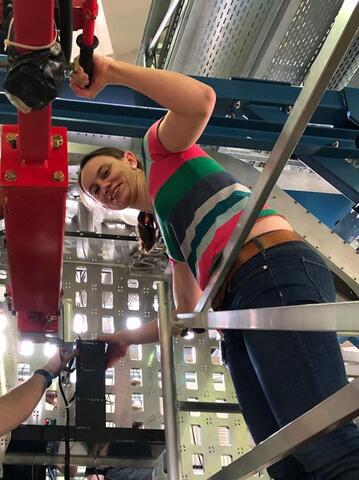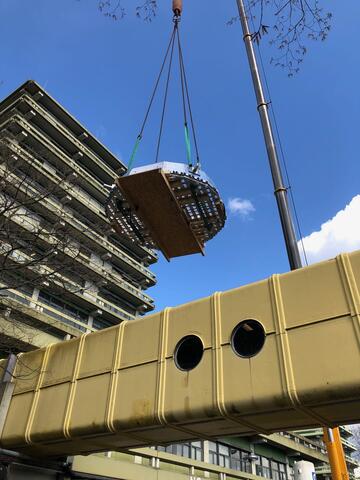Workshop „Physics Opportunities with Proton Beams at SIS100” was held in Wuppertal
PANDA meetings
04/03-08/03 2024 CM 24/1 in Münster
24/06-28/06 2024 CM 24/2 at GSI
25/06-26/06 2024 FEE/DAQ Workshop
04/11-06/11 2024 CM 24/3 at GSI
05/03-07/03 2025 WS at GSI
16/06-20/06 2025 CM 25 in Uppsala
FPGA-based algorithms for feature extraction in the PANDA shashlyk calorimeter
Markus Preston
TA-CON-2020-004.pdf
(3.4 MB)
Fritz-Herbert Heinsius
PANDA is one of the four experimental pillars of the upcoming FAIR facility in Darmstadt, Germany. In PANDA, an antiproton beam with an energy between 1.5 and 15 GeV/c will interact in a hydrogen or nuclear target, allowing for studies of various aspects of non-perturbative QCD. Motivated by the high interaction rates and the diverse physics goals of the experiment, a triggerless readout approach will be employed. In this approach, each detector subsystem will be equipped with intelligent front-end electronics that independently identify signals of interest in real time. In order to detect the most forward-directed photons, electrons and positrons in PANDA, a shashlyk-type calorimeter is being constructed. This detector consists of 1512 individual cells of interleaved plastic scintillators and lead plates, and has been optimised to have a relative energy resolution of approximately 3%/sqrt(GeV) and a time resolution of approximately 100 ps/sqrt(GeV). The signals from this detector will be digitised by sampling ADCs and processed in real time by FPGAs. As part of the triggerless approach, these FPGAs will perform so-called feature extraction on the digitised signals, where the pulse-height and time of incoming pulses are extracted in real time. A substantial pileup rate is expected, and it is foreseen that the chosen algorithm should enable reconstruction of such events. The work presented here has consisted of developing a detailed Geant4-based model of the shashlyk calorimeter and readout system, calibrating this model against testbeam data, and using it to evaluate potential feature-extraction algorithms for the PANDA shashlyk calorimeter.





